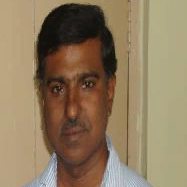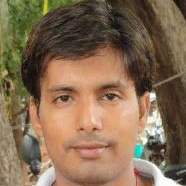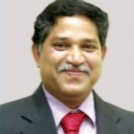International Journal of Image, Graphics and Signal Processing (IJIGSP)
IJIGSP Vol. 6, No. 10, 8 Sep. 2014
Cover page and Table of Contents: PDF (size: 994KB)
Fast Visual Object Tracking Using Modified kalman and Particle Filtering Algorithms in the Presence of Occlusions
Full Text (PDF, 994KB), PP.43-54
Views: 0 Downloads: 0
Author(s)
Index Terms
Visual object tracking, kalman filter, background substraction, particle filter
Abstract
In the present day real time applications of visual object tracking in surveillance, it has become extremely complex, time consuming and tricky to do the tracking when there are occlusions are present for small duration or for longer time and also when it is done in outdoor environments. In these conditions, the target to be tracked can be lost for few seconds and that should be tracked as soon as possible. As from the literature it is observed that particle filter can be able to track the target robustly in different kinds of background conditions, and it’s robust to partial occlusion. However, this tracking cannot recover from large proportion of occlusion and complete occlusion, to avoid this condition, we proposed two new algorithms (modified kalman and modified particle filter) for fast tracking of objects in the presence of occlusions. We considered the complete occlusion of tracking object and the main objective is how fast the system is able to track the object after the occlusion is crossed. From the experimental results, it is observed that the proposed algorithms have shown good improvement in results compared to the traditional methods.
Cite This Paper
G.Mallikarjuna Rao, Siva Prasad Nandyala, Ch.Satyanarayana,"Fast Visual Object Tracking Using Modified kalman and Particle Filtering Algorithms in the Presence of Occlusions", IJIGSP, vol.6, no.10, pp.43-54, 2014. DOI: 10.5815/ijigsp.2014.10.06
Reference
[1]Kamarul Hawari Bin Ghazali,Jie Ma,Rui Xiao,"Driver's Face Tracking Based on Improved CAMShift", IJIGSP, vol.5, no.1, pp.1-7, 2013.DOI: 10.5815/ijigsp.2013.01.01.
[2]"Occlusion processing using particle filter and background subtraction algorithms", Guo, Tongqing; Rong, Jian; Lu, Kui; Zhong, Xiaochun Proceedings of the SPIE, Volume 8762, id. 87621U5.
[3]"Particle filter-based visual tracking with a first order dynamic model and uncertainty adaptation", Alberto Del Bimbo, Fabrizio Dini, Computer Vision and Image Understanding 115 (2011) 771–786.
[4]"Software environments for implementing the particle filter with dynamic models,", G. Quesnel, H. Raynal, E. Ramat, and D. Makowski, , pp. 2001–2002, 2006.
[5]"An introduction to the Kalman Filter", Greg Welch, and Gary Bishop. , Technical Report TR 95-041, University of North Carolina, Department of Computer Science, 1995.
[6]"Office Robot Localization with a Nearest Neighbor Observation Model: A Comparison of Different Particle Filter Techniques", Erwin J.T. Buijs, Informatics Intelligent Autonomous Systems Faculty of Science (FNWI), University of Amsterdam (UvA), Netherlands. August 8, 2003.
[7]http://www.cvip.louisville.edu/wwwcvip/research/researchMe/tools.htm.
[8]F. Gustafsson, “Particle Filter Theory and Practice with Positioning Applications,” IEEE Aerospace and Electronic Systems Magazine, vol. 25, no. 7, pp.53-81, July, 2010.
[9]M. S. Arulampalam, S. Maskell, N. Gordon, and T. Clapp, “A Tutorial on Particle Filters for Online Nonlinear/Non-Gaussian Bayesian Tracking,” IEEE Trans.on Signal Processing, vol. 50, no. 2, February, 2002.
[10]"Tutorial: Rao-Blackwell Particle Filtering", www.ai.mit.edu/courses/6.834J-f01/john_tutorial.doc.
[11]http://www.juergenwiki.de/work/wiki/doku.php?id=public:particle_filter.
[12]B. Ristic, S. Arulampalam, N. Gordon, “Beyond the Kalman Filter: Particle Filters for Tracking Applications”, Artech House Publishers, 2004.
[13]D. Simon, Optimal State Estimation: Kalman, H Infinity, and Nonlinear Approaches. pp. 1–530.
[14]"Position Estimation And Position and Map Estimation Via Particle Filtering", Stephen Bernsee,thesis report, Seth Hutchinson..
[15]"Measures of Performance for Evaluation of Estimators and Filters", X. Rong Li Zhanlue Zhao, Proceedings of SPIE Conference on Signal and Data Processing of Small Targets, San Diego, CA, USA, July-August 2001. (4473-61).


